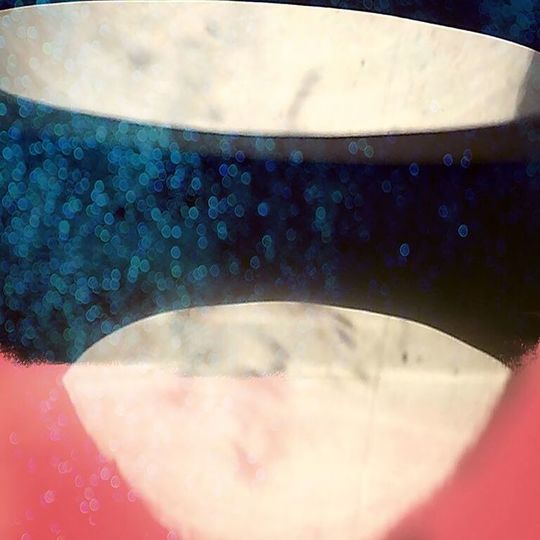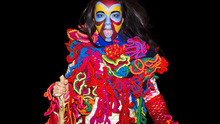Swahili Blonde’s And Only The Melody Was Real presents an unembellished voice with only the slimmest of testimony to offer. The voice belongs to co-founder Nicole Turley, and says what it says without many words, alongside Talking-Heads-meets-twenty-first-century-century thinkpop beats. The title of the record provides some oblique reasoning for the voice’s sparseness: despite songs’ lyrical conceits, what most gathers people’s attention is the wordless melody, the feel. Therefore, unmarred by linguistic convolutions, the melody is as real as real can get.
A decidedly non-linear tale surrounds the continued existence of Swahili Blonde. Founded by LA-based Turley, the band's revolving door has seen John Frusciante, John Taylor (Duran Duran), and Alan Meyers (Devo) come and go (in fact, she was married to Frusciante for four years, before what Wikipedia calls a 'messy settlement' in mid-2015). Having employed complex layering techniques on previous records, Turley has elected recently for a less-is-more approach, to more realized effect.
Despite the voice’s apparent minimalism, the lyrics stake quite a claim to intrigue. They allude to the songs’ central feel without implicating it directly. In the off-center 'Diamond Room', Turley’s refrain goes, “welcome to the diamond room/We will only take all of you/Watch your shadow fall”. A metallic synth slurs against the vocal rhythm of these lines. One can derive some opaque LA satire from this, but the song does not beckon analysis as much as it conjures a danceable feel. Following the faux-glittery refrain, the phase changes to something more nearly nightmarish: “I had a dream that we were never what we seem” Turley reports, as a windy synth expands the space previously occupied by the metallic one. Through this, the rhythm never breaks. The darker B section concludes the song, and we are left with the notion that the nightmare trumps the dream.
The record’s slightness and rhythmic reliability could lead a listener to overlook Turley’s penchant for and facility with truly strange melodic choices. Now and again, she employs a recognizable chord pattern, as in 'And Her Name Is Hope', which is as close to indulgently ecstatic as she seems willing to get. More common is the aesthetic of 'Saturn Farewell' which asserts its foreignness with melodies that aren’t easy to pin to a particular mood. At a high velocity, it feels slightly disturbed, but never chaotic.
The continuity of rhythm in these songs gives them reliable foundations from which to expand. The songs’ structures are not challenging, but that doesn’t mean they’re predictable. The collective effect is similar to the Talking Heads’ best material — 'The Great Curve' comes to mind — where a song promises you nothing but a beat, and then piles on. The big difference is that Swahili Blonde’s minimalism makes the Talking Heads’s ecstatic approach look gratuitous. There is no fat on this record. Its eight songs span less than 30 minutes, and when it’s over, you’re left feeling about 80% full. Which, of course, brings you back for more.
-
8Dustin Lowman's Score























